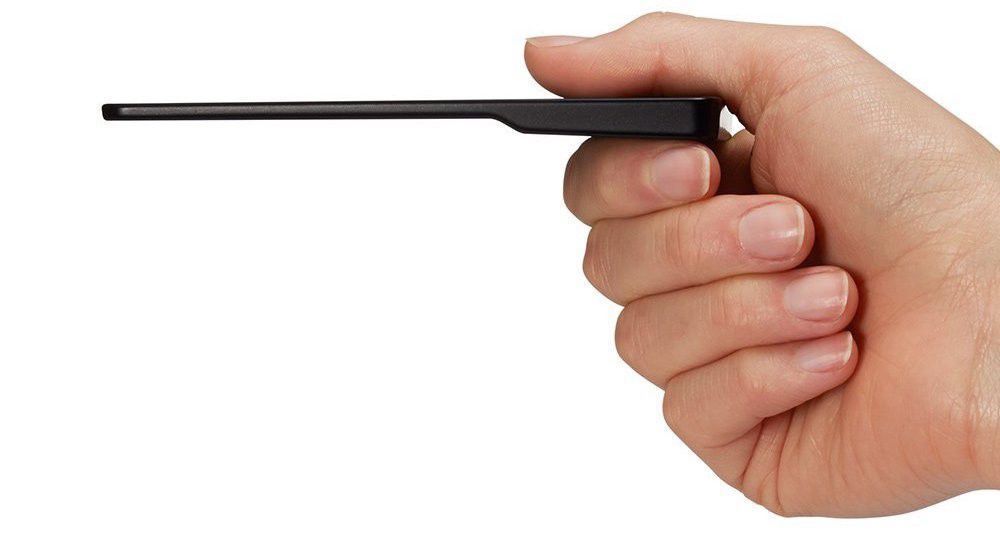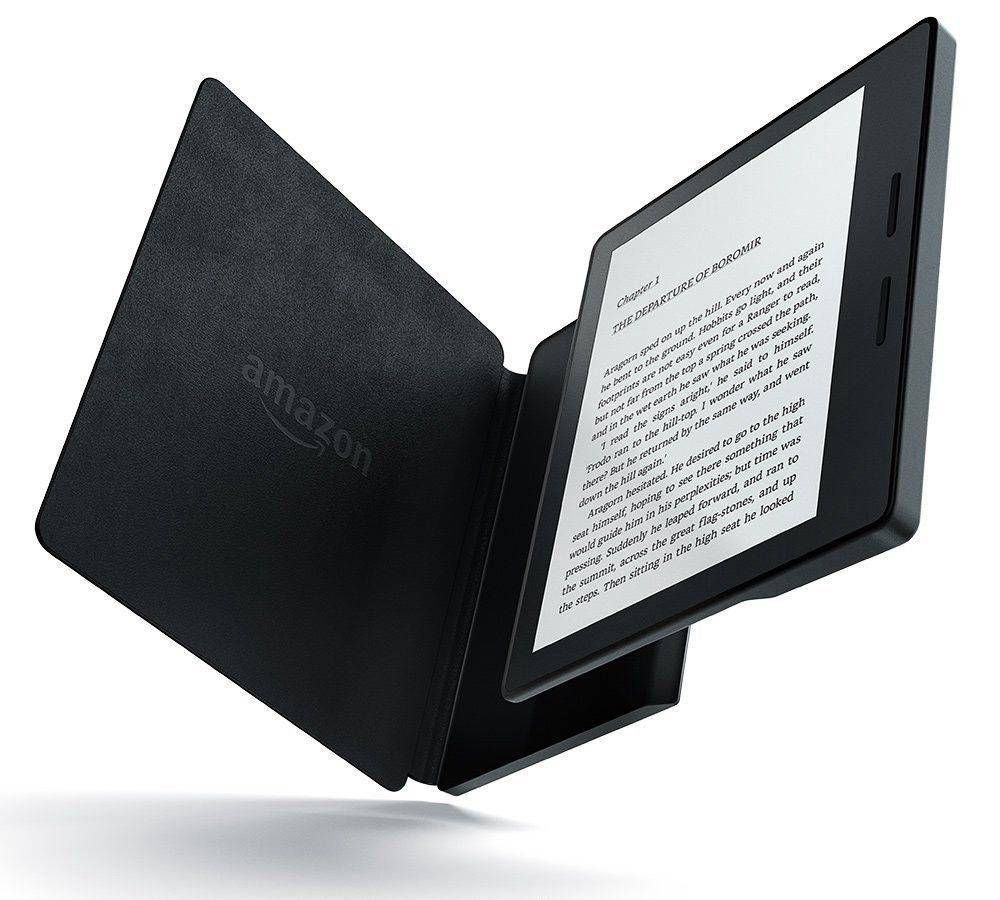Kindle Oasis Announced
No, it’s not waterproof, it’s not bigger, and you can’t use it to talk to Alexa. It’s still the best device for exactly one thing: reading

The biggest hurdle to understanding the Kindle is trying to compare it to a tablet. Amazon’s latest flagship retails for $400 with the cover included (that’s in Canadian pesos—it’s $289 for you American folks), and many will rightly comment that for that money you can buy an iPad.
Which is true.
But while a Kindle and a tablet share the same general form factor, they do not share the same goals. If you’re after gaming, web browsing, music playing, and other common tasks, what you want to buy is a tablet. Probably an iPad.
A Kindle is a specialized device that’s built from the ground up to be the very best at just one thing: reading. Not everyone needs that, just like not everyone needs an espresso machine instead of a simple coffee maker.
For those who do want a dedicated reading device-and want the best-Amazon has the Oasis.
A Very Dry Oasis
First hurdle: it’s not waterproof!
Let’s all let out a collective groan of exasperation. Some of you will be groaning because you wanted it to be waterproof and it isn’t. I’m groaning because if you’re not going to make the thing waterproof, why on earth would you name it Oasis?!
I didn’t expect it to be waterproof. I don’t want a waterproof Kindle. It’s one of those features that sounds very important and makes it easy for Kobo to sell their Aura H2O, but in practise I have absolutely never needed it.
I’ve been using e-readers for years, and my Kindles have come with me on plenty of vacations where I’ve read by the pool, by the ocean, etc. I don’t know about the rest of you, but when I’m actually in the pool, I’m swimming.
I don’t read underwater.
So far, none of my Kindles have died as a result of normal pool/tub splashes of water, which makes me think I’m either very lucky or very strange for not wanting to submerge my books.
Even if I did love reading under the sea, that usage would account for perhaps 2% of my total reading time. You know what’s more valuable to me the other 98% of the time?
Size, weight, and form factor.
Light as a Feather, Stiff as a Board
It looks weird.
That’s my first impression from the press images. Beautiful, but weird. I like symmetry, so the whole lopsided design thing is going to take some getting used to.

That being said, I know that my own reading habits tend toward one-handed usage, so the new design should make it virtually effortless to hold given the ludicrous 130g weight.
To put that into perspective, 130 grams is about 1/20,000th the weight of a giraffe, which…is…really not helpful. That was one of the first results when I Googled for something to compare the weight to. Just goes to show you that the Internet isn’t always helpful.
Speaking of which, the Oasis is still pretty limited in terms of its capabilities.
The two connection options—WiFi and WiFi+3G—are only good for getting books onto the device and synchronizing your read positions and highlights to the cloud.
In the context of a device that’s made for reading, these limitations make sense. I don’t know about you, but reading on a tablet is distracting, to say nothing of the unpleasant effect of backlighting on your eyes during extended reading sessions.
A Sight for Sore Eyes
New software techniques like Apple’s Night Shift in iOS 9.3 help, but they don’t change the fact that typical display technologies put more strain on your eyes than Amazon’s “front-lit” Kindle displays. These shine light downward, toward the screen, instead of up at your eyes, so your eyes don’t dry out and get sore.
Compared to the Kindle Voyage, the Oasis has the same screen resolution but more LEDs to help make the lighting more even across the screen.
One of my main feature requests for the Voyage successor was a duo-tone LED array that would allow the software to optimize not just brightness but colour temperature to reduce harsh blue light during evening reading sessions.
Alas, the Oasis has no colour temperature control. Maybe next time. But the most peculiar part of the screen is the apparent omission of the light sensor that allowed the Voyage to automatically adjust display brightness according to ambient light conditions.
Why this useful feature of the Voyage was removed on its successor is a mystery to me. It was one of the only things that set the Voyage screen apart from the Paperwhite’s.
Got You Covered
Amazon’s got a thing for interesting cases, that’s for sure. The Origami cover was my favourite aspect of the Kindle Voyage, and the biggest innovation besides the shape of the Oasis is definitely its unique charging cover.

We’re back to a book-like cover, which I’m not especially happy about after experiencing the flexibility and double-sided utility of the Origami cover, but it does keep the thing looking more like a book.
And hey, it’s included in the price so you don’t have to buy it separately!
In any event, the upside is that this dual battery setup allows the Oasis to go from lasting weeks on a charge to lasting months, which is remarkable. Not only that, but there’s a software component that puts the Kindle into a low-power hibernation when it senses that it’s been left alone for a while.
Hopefully that’s a feature that can find its way to the previous generations via firmware update at some point.
It’s a Kindle
Amazon’s done a great job of diversifying their Kindle line-up so that there’s something for everyone, at every price point from “no-brainer” to “whoa, dude”.
But selling Kindles is still tough.
Even if you clear the hurdle of convincing people that it’s worth having a separate device dedicated to reading when they can just use the Kindle app on their phone or tablet, you’re still left justifying the cost of a high-end model.
The difference in reading experience between the Paperwhite, Voyage, and Oasis is small. Nuanced improvements and subtle details add up over hours and hours of reading, but is it worth a $100 price jump from model to model? For some, the answer is yes.
For those who are happy to pay for the very best experience, who spend a lot of time reading and never want to experience battery anxiety again, who are okay with taking another device as long as it’s imperceptibly light and compact…there’s the new Kindle Oasis.
I’m hoping to get one to review so that I can pit it head-to-head against its siblings, the Paperwhite and Voyage, to really understand where it pulls ahead.
Until then, happy reading!